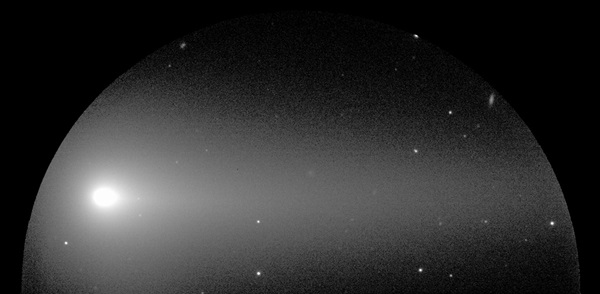Key Takeaways:
The optical image of Comet ISON follows Subaru’s successful mid-infrared imaging of it with the Cooled Mid-Infrared Camera and Spectrometer (COMICS) on October 19 and 21. The current image, taken with an exposure time of five seconds, shows the structure of the coma — the atmosphere around the nucleus — as well as a tail extending from the nucleus. Named for the robotic telescope that spotted it, the International Scientific Optical Network (ISON), the comet was 118 million miles (190 million kilometers) away from Earth and 93 million miles (150 million km) from the Sun at the time of observation conducted by Masafumi Yagi from the National Astronomical Observatory of Japan. As it continues to head for its close encounter with the Sun, Comet ISON is expected to become very bright.
“The observation of the night was hard because the weather conditions changed often,” said Yagi. “We needed to open and close the dome several times. We were fortunate to capture clear images of the comets and share these images with so many people.”











